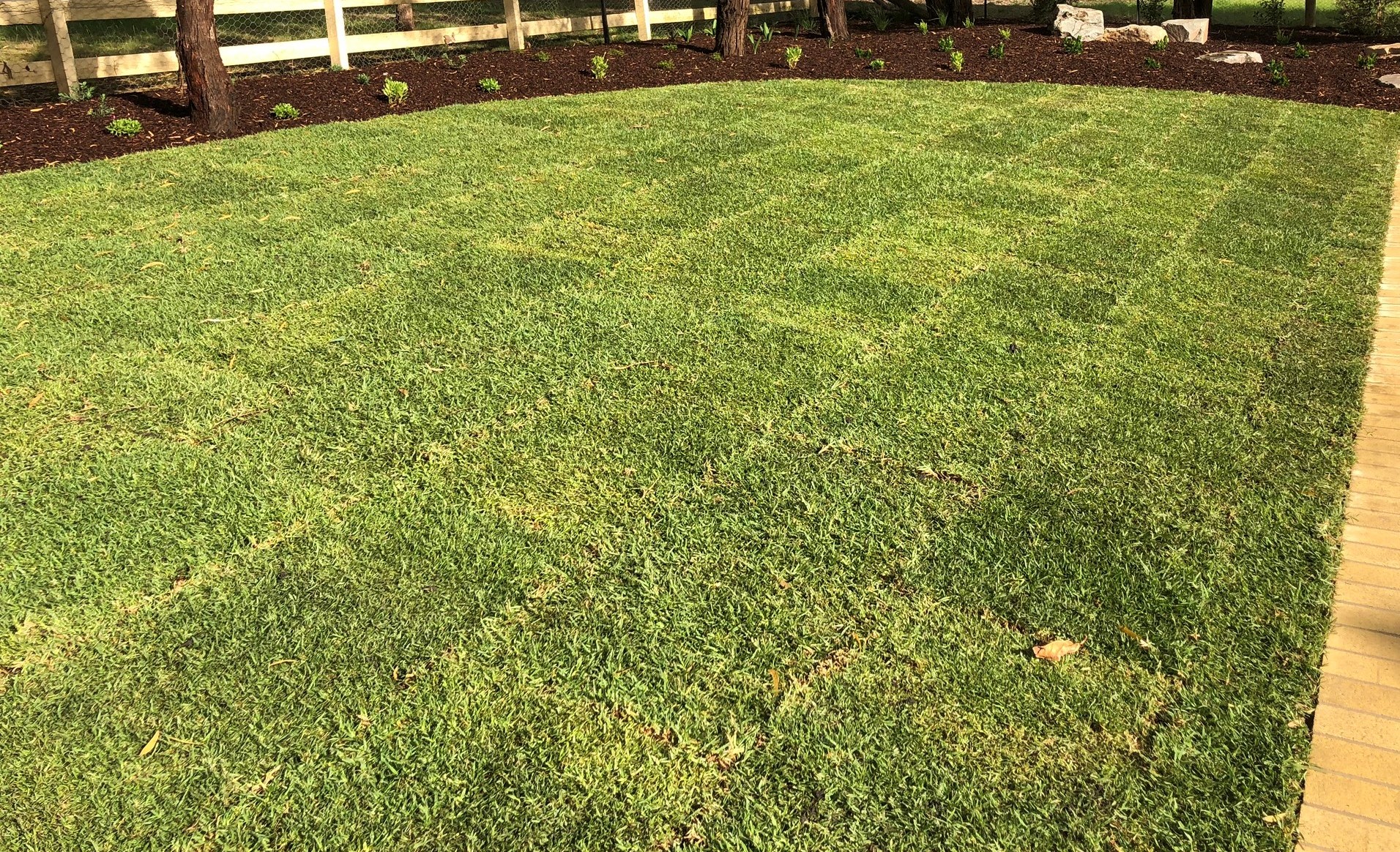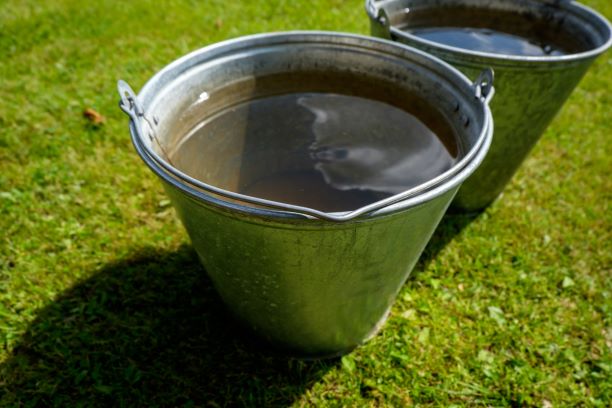Can a Lawn Mower Spread Fungus?
A beautiful green lawn is a natural invitation to relax, play and spend time outdoors. However, ensuring your lawn stays healthy requires effort and a lawn care routine, ...

 From mowing, aerating & watering, to fertilising & seasonal lawn care tips, this lawn care guide covers it all…
From mowing, aerating & watering, to fertilising & seasonal lawn care tips, this lawn care guide covers it all…
After reading this guide from head to toe you will be more than qualified to maintain & sustain your perfect lawn.
So, read on to get actionable tips and advice to keep your lawn looking it’s best year round!
 Maintaining a new lawn is crucial.
Maintaining a new lawn is crucial.
Just a few minutes every day will help it establish well and ensure your investment thrives!
A new lawn needs lots of TLC but most importantly water – never let the ground dry out.
Keep all foot traffic off the new lawn until it has fully rooted – meaning you cannot pull the new turf back on itself.
Only mow your new lawn once your roots are firmly established (approx 6-8 weeks) and be sure to not mow too short.
From watering to mowing, thatching & weed control, there is a lot to consider when maintaining your new or existing lawn.
The best time to water your lawn is early in the morning before it gets hot.
Most of the water will make it to the roots and the grass blades will dry quickly, preventing disease problems.
The rule to remember is infrequent and deep watering is preferable for your lawn because the roots will only grow as deeply as its most frequently available water is supplied.
 Many lawns across Australia will at some stage suffer from drought or water restrictions.
Many lawns across Australia will at some stage suffer from drought or water restrictions.
You water your lawn during drought conditions when the leaf blades start to wilt.
A dormant lawn will respond to deep watering or rainfall.
By watering your lawn thoroughly and deeply you encourage the development of strong root growth in your lawn.
Water restrictions are a constant burden on lawn owners in Australia.
The good news is you can still maintain a healthy lawn during water restrictions.
It is important to always check with your Council regarding the level of your water restrictions and how often you can water.

Grey Water is a very viable alternative to watering your lawn during summer or more importantly water restrictions.
Grey Water consists of wastewater from your showers, baths, spas, hand basins, laundry tubs, washing machines, dishwashers, and kitchen sinks.
Grey Water DOES NOT include the water from your toilet.
Before you start to use your Grey Water, it is important to note that different states have different rules regarding the use of Grey and Recycled Water – be sure to check these first.
Proper lawn mowing heights are important for all lawn types, and especially for Buffalo grasses such as Palmetto, Sapphire & Prestige.
The differences in mowing heights for Buffalo grasses can mean big differences in lawn health, thatch control and water usage.
Normal weekly mowing is the rule, but some lawns need cutting more often.
Some lawns, such as Zoysias, grow more slowly and might need cutting only once every 10 days or two weeks.
Generally, when mowing your lawn don’t cut off more than one-third of the grass blade.

Your Lawn is a living thing and it needs to be fed, just like you.
Therefore, fertilisers create a healthy, maintained lawn which is pleasing to the eye.
Regular fertilising of your lawn helps to keep it strong, healthy, and green.
Each different turf variety requires different levels of fertiliser applications, but the rule of thumb is to fertilise each season.
Alternately fertilise by feeding three times a year – early spring, winter, early summer and mid to late autumn.

Thatch is a necessary, natural and beneficial part of all lawn.
However, it becomes a real problem when it increases to excessive amounts.
This then has many detrimental effects on the lawn and must be dealt with effectively to remove the problem.
Dethatching removes a thin thatch layer, less than 1.3cm thick, that consists of organic mulch but prevents water, nutrients, and air from penetrating into the soil and reaching the important roots.
Aeration is an important part of maintaining a healthy lawn.
Aeration opens-up your lawn allowing it to be porous enough for oxygen, water, and nutrients to be absorbed into the soil and down to the roots.
Aeration helps prevent the build-up of thatching and encourages the deep rooting of your lawn, therefore, producing a strong more vigorous turf.
The failure to correctly identify your lawn’s diseases, pests & or weeds can worsen the problem. With it being all too common that homeowners apply the wrong treatment to their lawns.
So, what are some of the common diseases, pests & weeds to look out for?

When disease attacks your turf, control can be difficult unless you know how to identify lawn diseases and understand the causes and prevention behind them. Is it Dollar Spot or Fusarium Patch?
Many common lawn diseases have fungal problems at their source such as Powdery Mildew. Fortunately, proper lawn maintenance and care can help prevent and resolve most lawn diseases.
There are numerous common lawn diseases including:
For more information on all the possible lawn diseases, check out our common lawn diseases guide.

Weeds may be green, but they are plants growing where they’re not wanted within your lawn.
Weeds can take any form and can vary depending on where they grow and typically produce large numbers of seeds, assisting their spread.
Unfortunately, weeds are often excellent at surviving and reproducing and are commonly the first plants to colonise and dominate.
The most common lawn weeds are:
Lawn weeds are pesky and troublesome at the best of times so myhomeTURF has a great lawn weeds guide of the main culprits and how to control them.

How do you know if your lawn is full of pests?
Common signs included brown spots, dead and dying grass patches, wilting or bite marks on leaf blades.
Underground lawn pests often leave holes in the soil and can be detected at night.
The most common lawn pests are:
We have a great lawn pests guide that covers all of the above culprits and how to treat them.
Your lawn, just like your mood, behaves quite differently depending on the season.
Understanding how the seasonal shifts impact your lawn will help ensure you know how to keep it flourishing, healthy & looking its best throughout the year.

Summer is one of the best times of the year to really appreciate your lovely, lush lawn.
However, it is also the hottest time of the year when the lawn is under great pressure from heat, wind and dryness.
While we can’t control the weather, we can control how we care and prepare our lawn, so it survives such tough conditions.
With some smart pre-planning, your lawn can be prepared.
Fertilising, watering, weeding and mowing are all parts of the process for preparing your lawn for summer.
 Lawn lovers take note! Autumn is the best time of year to give your turf some TLC before the onset of cooler weather.
Lawn lovers take note! Autumn is the best time of year to give your turf some TLC before the onset of cooler weather.
Why? Because the soil temperature is still warm enough to stimulate grass growth.
Following a long hot summer, most of your lawn’s autumn care work involves returning it to good health for the cooler months when the grass can go dormant.
With diligent lawn care in Autumn, you can prepare your lawn for the colder months to come.
Lawn care during Autumn usually involves:
For a full guide, check out our Autumn lawn care guide.

Are you tempted to stop caring for your lawn during winter?
Don’t be! Beneficial work during the cooler months, will make your lawn look vibrant and healthy come spring.
It’s tempting to stop work on your lawn during winter, however if you put in some effort during the cooler months, you can make your lawn look vibrant and healthy come spring.
Just remember, that your lawn may go dormant during winter while your soil remains moist.
Therefore you must adjust your water regime during colder months.
Below are some of the basic tasks you need to perform in winter:
For a full guide, check out our Winter lawn care guide.

Spring lawn preparation means it will then be beautifully set-up to get through the coming summer months.
The soil is now starting to warm and the is grass coming out of its winter dormancy.
The weather is now becoming warmer and your lawn will require some extra attention.
Common tasks to take care of your lawn in spring:
Check out our guide of spring lawn care tasks that can easily be done making your grass lush and soft ready for summer.
 From torrential rains to blazing days of drought sunshine, Australia’s lawns must cope with every sort of condition the climate throws at them.
From torrential rains to blazing days of drought sunshine, Australia’s lawns must cope with every sort of condition the climate throws at them.
Thanks to smart breeding, there are some great turf types in Australia that have grown and adapted well to the wide range of climatic conditions thrown at them.
Often sporting deep-rooted systems that seek out soil moisture during dry periods making them drought-tolerant. In drought conditions – Lawn owners often ask the question – How do you know if your lawn is still alive in a drought?
Salt tolerance is also needed for those living near the coast & a healthy dose of wear tolerance for all those backyard cricket matches!
There are also many lawns out there with fast-growing stolons that repair effectively after high traffic for children or pets.
We have created Lawn Care and Maintenance guides for the following:
If you are interested in a new lawn that’s better suited to the Australian climate, check out our choosing your turf guide.

LawnPride TraceMaxx 5L Concentrate provides a complete package of the 9 essential Trace Element nutrients that aid in preventing plant nutrient deficiencies. Suitable grasses are Zoysia, Kikuyu, Couch and Buffalo. Always read the safety directions and instructions on the product label before use.
SHOP NOW
Lawn Pride Maintain 26-2-9 + 3.4 Fe 20kg is one of the most popular granular all-round lawn fertilisers on the market with the active ingredients of Nitrogen (N – 26), Phosphorus (P – 2), Potassium(K – 9) and Iron (Fe – 3.4). Suitable for Zoysia, Kikuyu, Couch and Buffalo grasses. Always read the safety directions and instructions on the product label before use.
SHOP NOW
LawnPride Groturf 15-4-11 + Traces 20kg is an instant release granular fertiliser designed to initiate rapid growth of your lawn thanks to extra trace elements that build up your soil’s nutrients. Suitable grasses are Zoysia, Kikuyu, Couch and Buffalo. Always read the safety directions and instructions on the product label before use.
SHOP NOW